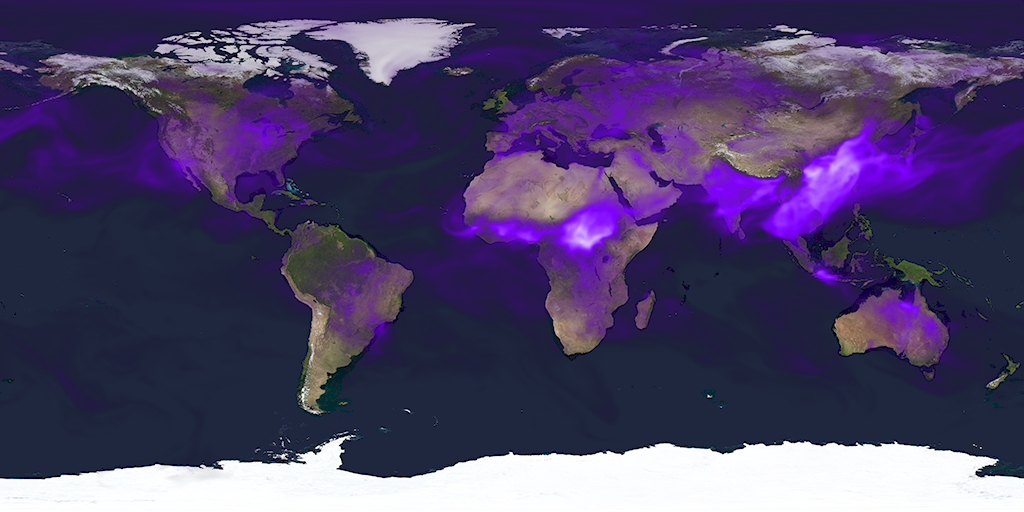Black Carbon: A Global Presence
When wood, fossil fuels, and even dried dung burns at low temperatures, countless bits of carbonaceous material waft into the atmosphere as smoke. These charred bits of matter— known as soot—usually remain aloft for just a short period, but they have a major impact on humans nonetheless. The chain-like particles can penetrate deep into the lungs and contribute to asthma and cardiovascular disease. They also impact the climate. In fact, soot has such a powerful ability to absorb sunlight that climatologists call it "black carbon" and the ubiquitous particles are thought to be the second strongest contributor to global warming following only carbon dioxide. The data visualization above, based on data from NASA's GOCART model, simulates the atmospheric concentration of black carbon between August and November of 2009. This story is the first of a two-part series on black carbon, which will conclude on Thursday with a look at how the particles affect the Himalayan region.

A tiny particle created by both backcountry burning and heavy industry has an outsized effect on Earth's climate.
Continents and oceans are shaded in order to make black carbon's atmospheric behavior easier to see.
Another view of the same visualization, this flat map version makes it easy to see the output of primary black carbon sources.

Notice the impact of North America's strict soot regulations, central Africa's constant wildfires and eastern Asia's fast-growing economy.

Light-absorbing soot (arrows) form chain-like aggregates and can glom on to light-reflecting sulfates (large rounded particles).
Credits
Please give credit for this item to:
NASA's Goddard Space Flight Center Scientific Visualization Studio
Microscopic image courtesy of James Anderson (Arizona State University)
-
Animator
- Horace Mitchell (NASA/GSFC)
-
Scientist
- William K. Lau (NASA/GSFC)
-
Writer
- Adam P Voiland (Wyle Information Systems)
Release date
This page was originally published on Tuesday, August 9, 2011.
This page was last updated on Wednesday, May 3, 2023 at 1:53 PM EDT.
